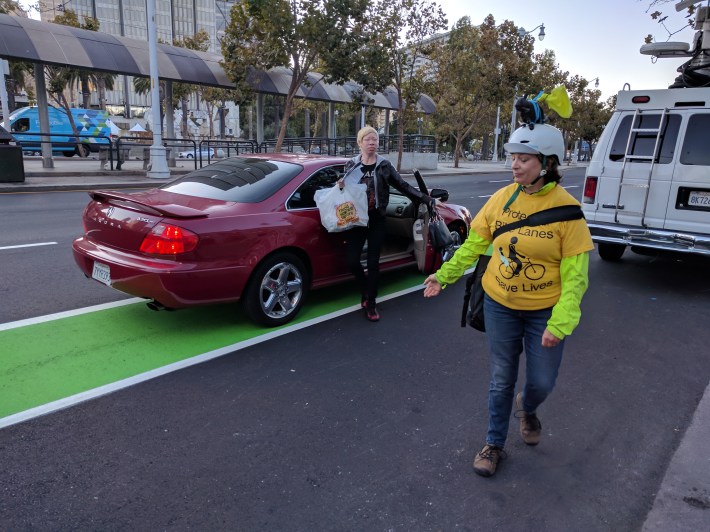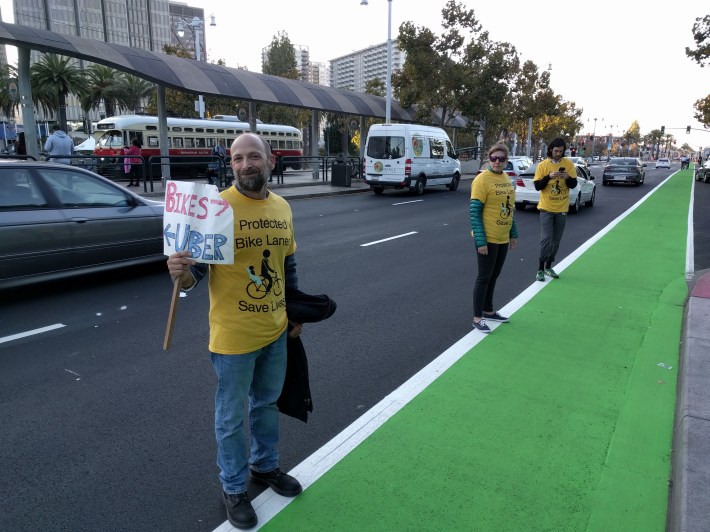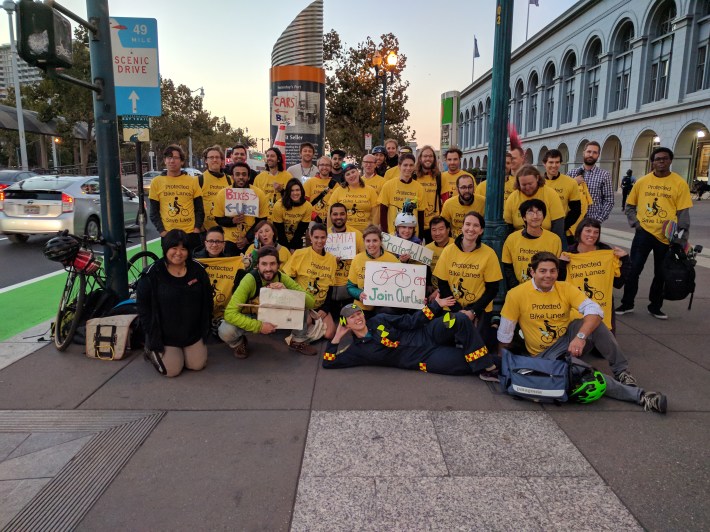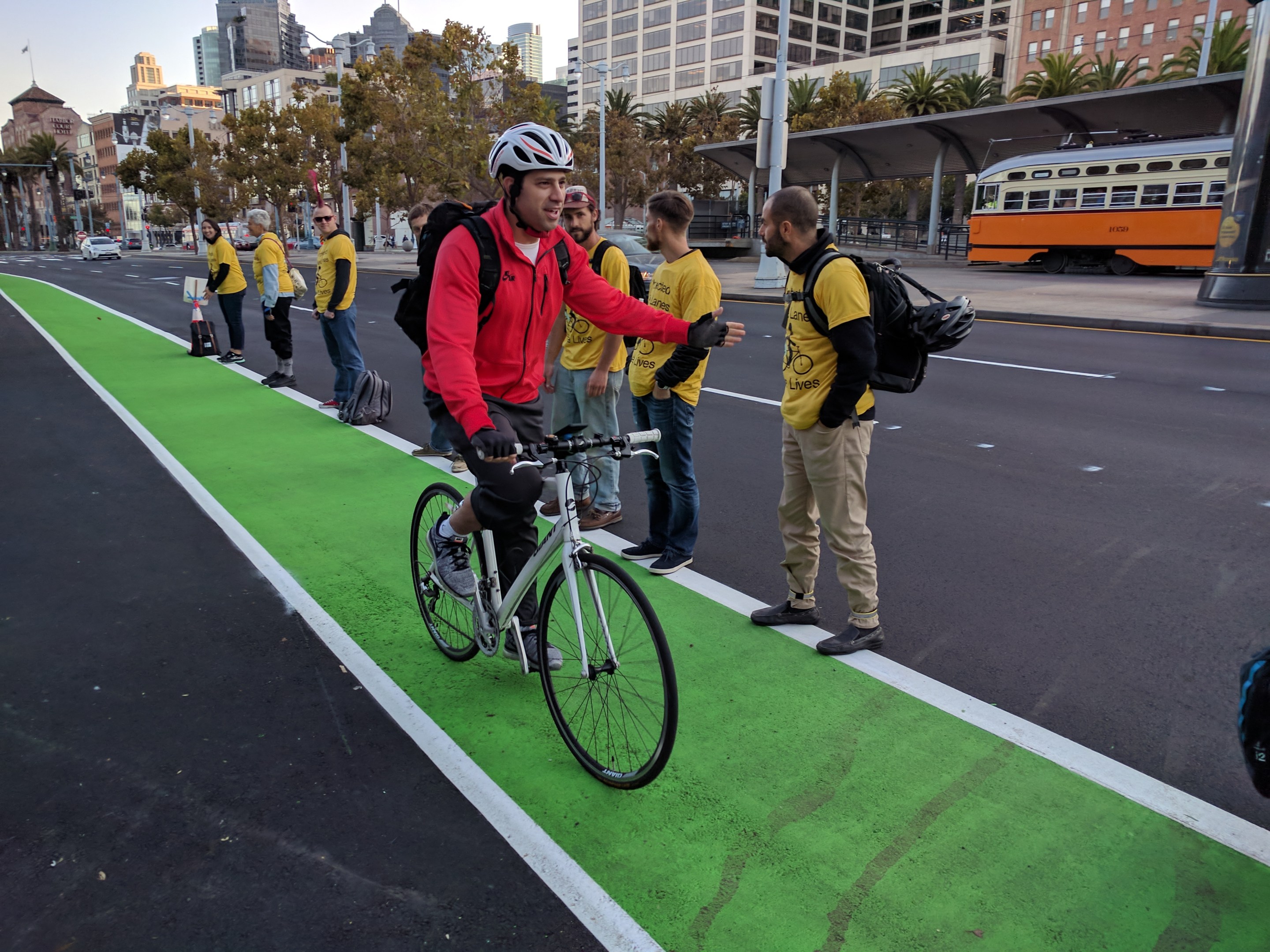Some 45 yellow-shirted safety advocates turned out last night to demand a protected bike lane on the Embarcadero.
"We as a city have prioritized cars over safety," said Matt Brezina, a chief organizer of this protest and previous ones on Valencia and Golden Gate. Brezina was pleased at the turnout and the fact that, as with the previous People-Protected Bike Lane protests, it attracted the attention of mainstream media (see photo below).
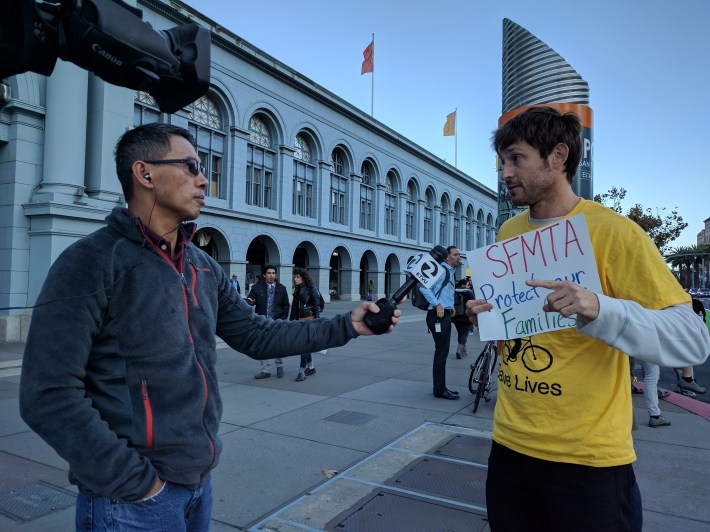
The protesters stood on the white line that in theory separates motor vehicles from bicyclists. In practice, of course, paint on its own does little to keep cars out of bike lanes. As seen in these photos, not only do cars regularly stop in the bike lane to discharge passengers, but fast-moving buses and huge trucks pass within inches of people on bikes in a way that is so clearly dangerous that it's difficult to comprehend how this ever got built like this in the first place.
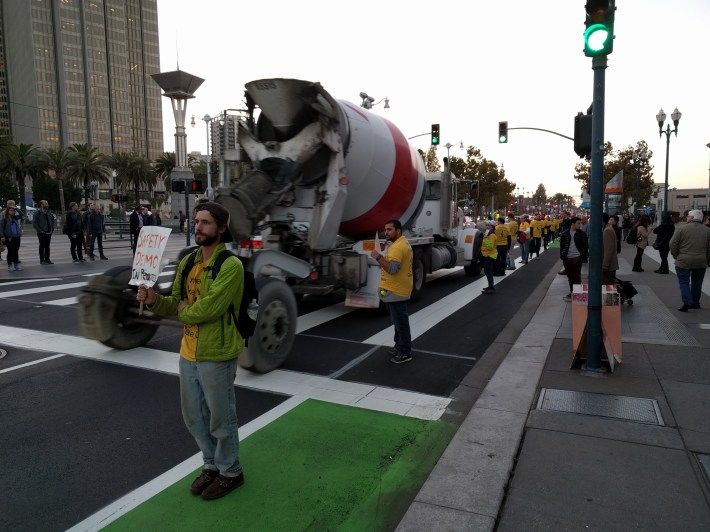
That's something Andrew Davidson, seen in the picture below, wonders about too. "It was a rainy morning and a bus overtook me and turned into me," he said, motioning down the street from where the protest was taking place. "He hit me in the shoulder." Davidson got lucky and managed to stay upright and was not injured.
But depending on luck isn't something most cyclists are willing to do, especially when they ride with children. Elisabeth Snider, who lives in the Sunset, rides almost everywhere with her kids, but she won't on this stretch. "I want to take them on the Embarcadero, but it's just too dangerous with a seven-year-old."
Cyclists can ride on the promenade/sidewalk instead, but that invites conflicts with pedestrians. One woman stopped to grouse to protestors about cyclists riding on the promenade. But, Davidson explained to her, while riding in the pedestrian-packed area is not ideal, it is legal. That's just another reason for a protected bike lane--it gives cyclists a space where they feel safe and reduces potential conflicts with walkers.
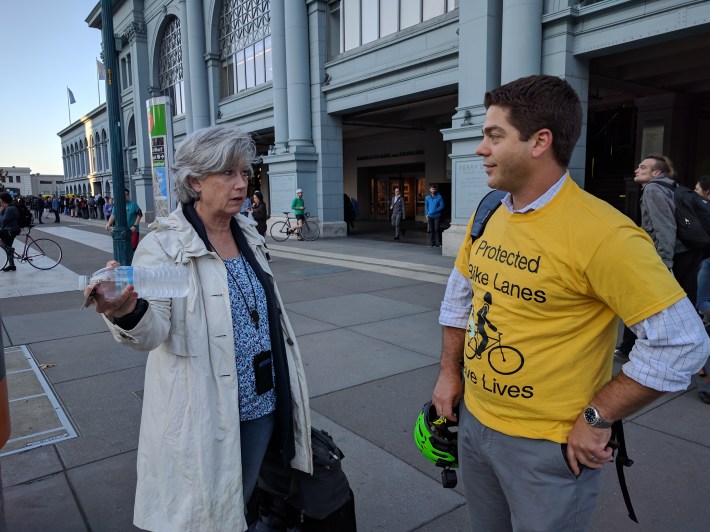
BART director, Streetsblog contributor, and candidate for Supervisor Nick Josefowitz also stopped by on his bike. "I regularly ride on the Embarcadero, and it's a mess of a street," he said. "Protected bike lanes would make it safer for all of us--it would make all of this area much less chaotic whether you're driving, riding, taking a historic streetcar, or walking."
Of course, in theory, SFMTA has a plan to fix this chaos--the Embarcadero Enhancement Project. But several protesters wanted to know why the agency can't get something up quicker, as they've done in SoMa under Mayor Lee's executive order. Ideas include demarking the pedicab/multi-use path on the Embarcadero sidewalk with green paint and plastic bollards to make it clear that the space is available for bikes, or putting up temporary construction barriers to protect the curbside lane. Several protesters also took issue with the fact that the bike lane doesn't follow the curb at drop-off zones--it forces cars to cross the bike lane to discharge and pick up passengers (that is, when they can be bothered to do so). This creates nearly non-stop conflict between motorists and cyclists.
Do we really have to wait for a truck or another speeding driver to veer into the bike lane and kill a bunch of people before there's a sense of urgency from the city? It seems the only time we see fast action from the city is when it removes safety measures, rather than when it adds them.

"We need to address the inability of the city to deliver projects on time," said Josefowitz. "We need to bring a performance-driven culture to the city where we hold executives accountable."
Amen to that. Meanwhile, this protest had a somber tone compared to similar actions on Valencia. Perhaps it was because cars and trucks move so frighteningly fast on the Embarcadero. The recent mass-murder-by-pickup-truck in Manhattan was on everyone's mind as they stood on the edge of the bike lane, trying to bring more attention to this dangerous condition. Everybody said they felt vulnerable. "It is tenser," than past protests, said Skip Pile, another of the protesters. "Especially after that New York thing."
More photos of the protest below.
